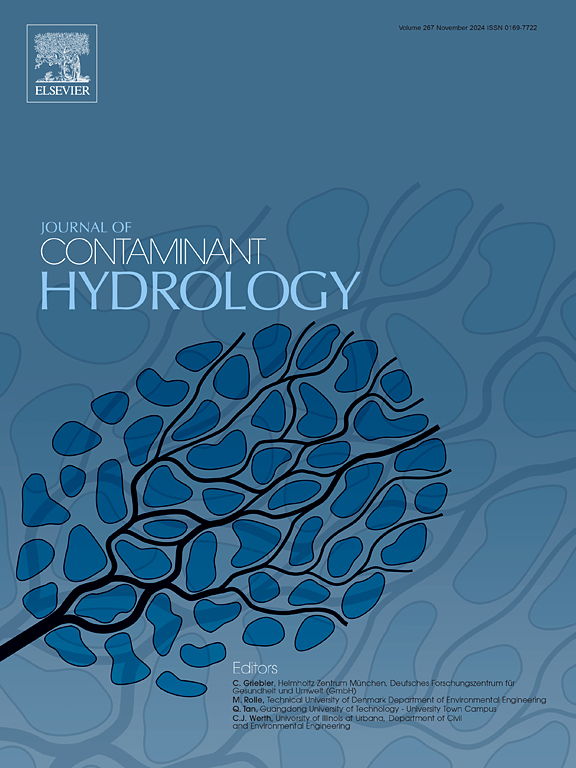预测CO2 - N2气体混合物在盐水中的溶解度的明确学习框架:对含盐含水层中不纯CO2储存的影响
IF 4.4
3区 环境科学与生态学
Q2 ENVIRONMENTAL SCIENCES
引用次数: 0
摘要
碳捕集与封存(CCS)是减少工业二氧化碳排放和减缓气候变化的关键技术。然而,它的大规模部署面临着巨大的财务挑战,二氧化碳捕获和压缩占总成本的很大一部分。为了减少这些费用,向含盐含水层注入不纯的二氧化碳流,特别是二氧化碳- n2混合物,是减少对昂贵分离过程需求的可行替代方案之一。该方法的有效性取决于在不同情况下对CO2-N2在盐水中的溶解度的一致估计,因为溶解度直接影响到储存效率、注入可行性和长期地层稳定性。实验方法虽然精确,但昂贵且耗时,突出了对高效预测模型的需求。在这项研究中,使用多基因遗传规划(MGGP)方法引入了稳健且可解释的白盒相关性,以估计CO2-N2气体混合物在盐水中的溶解度。相关性在具有代表性的实验数据库中进行了训练和验证,确保了在不同压力、温度和盐度条件下的可靠预测。基于mggp的相关性总体R2较高,CO2为0.9967,N2为0.9914,RMSE较小,分别为0.000363和0.000052。这些相关性不仅确保了准确性和物理一致性,通过详细的趋势分析证实,而且显著优于文献中报道的先前方法。此外,利用SHAP技术提高模型的可解释性,加深对输入参数贡献的理解。这些相关性为现实世界的CCS应用提供了一个强大而实用的工具,包括技术经济评估和注入策略设计,特别是在考虑不纯气流的情况下。本文章由计算机程序翻译,如有差异,请以英文原文为准。
Toward explicit learning frameworks for predicting the solubility of CO2 – N2 gas mixtures in brine: Implication for impure CO2 storage in saline aquifers
Carbon capture and storage (CCS) is a crucial technology for reducing industrial CO2 emissions and mitigating climate change. However, its large-scale deployment faces significant financial challenges, with CO2 capture and compression accounting for the great part of total costs. To reduce these expenses, the injection of impure CO2 streams, particularly CO2–N2 mixtures, into saline aquifers is among the viable alternatives to minimizing the need for costly separation processes. The effectiveness of this approach depends on consistently estimating CO2–N2 solubility in brine under varying scenarios, as solubility directly influences storage efficiency, injection feasibility, and long-term formation stability. Experimental methods, while precise, are expensive and time-intensive, highlighting the need for efficient predictive models. In this study, robust and interpretable white-box correlations are introduced using the multigene genetic programming (MGGP) approach to estimate CO2–N2 gas mixtures solubility in brine. The correlations were trained and validated on a representative experimental database, ensuring reliable predictions across diverse pressure, temperature, and salinity conditions. The MGGP-based correlations achieved high overall R2 of 0.9967 for CO2 and 0.9914 for N2, with small RMSE values of 0.000363 and 0.000052, respectively. These correlations not only ensure accuracy and physical consistency, confirmed through detailed trend analyses, but also significantly outperform previous approaches reported in the literature. Furthermore, SHAP technique was employed to enhance model interpretability and deepen understanding of input parameter contributions. These correlations offer a powerful, practical tool for real-world CCS applications, including techno-economic assessments and the design of injection strategies, especially when considering impure gas streams.
求助全文
通过发布文献求助,成功后即可免费获取论文全文。
去求助
来源期刊

Journal of contaminant hydrology
环境科学-地球科学综合
CiteScore
6.80
自引率
2.80%
发文量
129
审稿时长
68 days
期刊介绍:
The Journal of Contaminant Hydrology is an international journal publishing scientific articles pertaining to the contamination of subsurface water resources. Emphasis is placed on investigations of the physical, chemical, and biological processes influencing the behavior and fate of organic and inorganic contaminants in the unsaturated (vadose) and saturated (groundwater) zones, as well as at groundwater-surface water interfaces. The ecological impacts of contaminants transported both from and to aquifers are of interest. Articles on contamination of surface water only, without a link to groundwater, are out of the scope. Broad latitude is allowed in identifying contaminants of interest, and include legacy and emerging pollutants, nutrients, nanoparticles, pathogenic microorganisms (e.g., bacteria, viruses, protozoa), microplastics, and various constituents associated with energy production (e.g., methane, carbon dioxide, hydrogen sulfide).
The journal''s scope embraces a wide range of topics including: experimental investigations of contaminant sorption, diffusion, transformation, volatilization and transport in the surface and subsurface; characterization of soil and aquifer properties only as they influence contaminant behavior; development and testing of mathematical models of contaminant behaviour; innovative techniques for restoration of contaminated sites; development of new tools or techniques for monitoring the extent of soil and groundwater contamination; transformation of contaminants in the hyporheic zone; effects of contaminants traversing the hyporheic zone on surface water and groundwater ecosystems; subsurface carbon sequestration and/or turnover; and migration of fluids associated with energy production into groundwater.
 求助内容:
求助内容: 应助结果提醒方式:
应助结果提醒方式:


